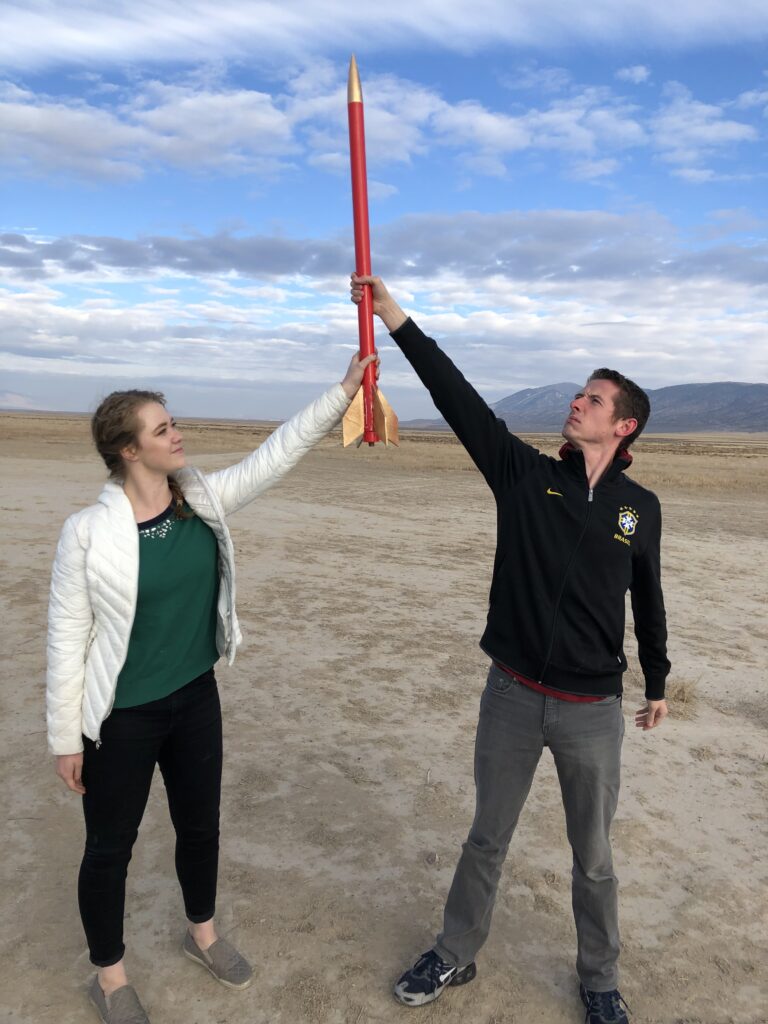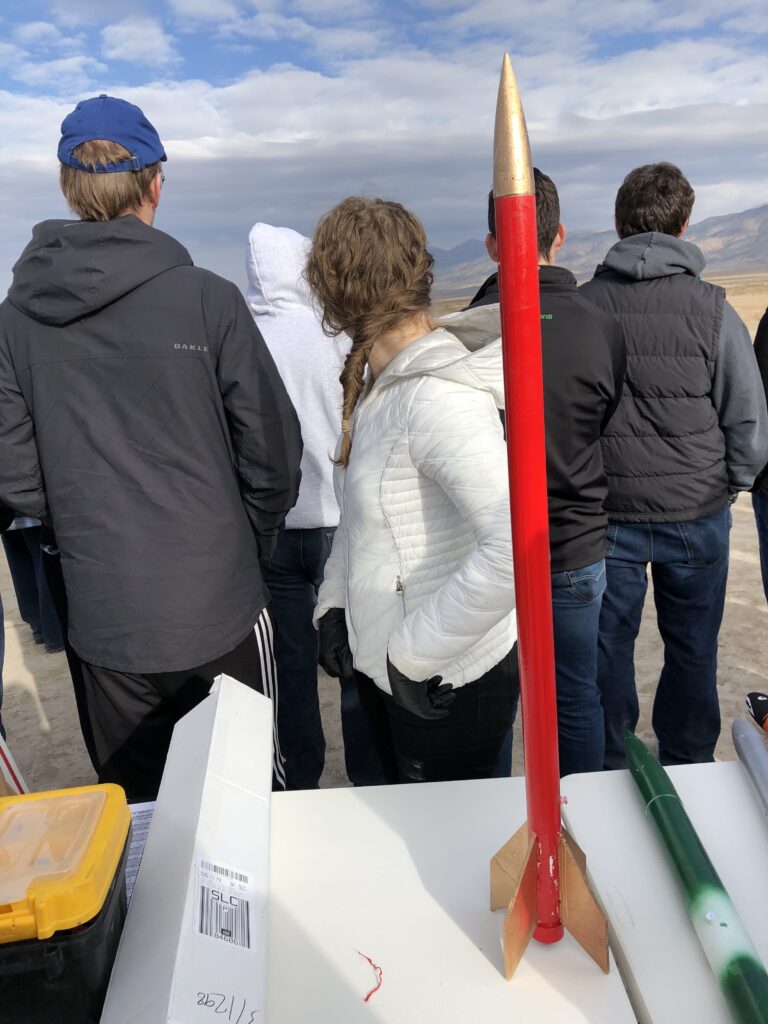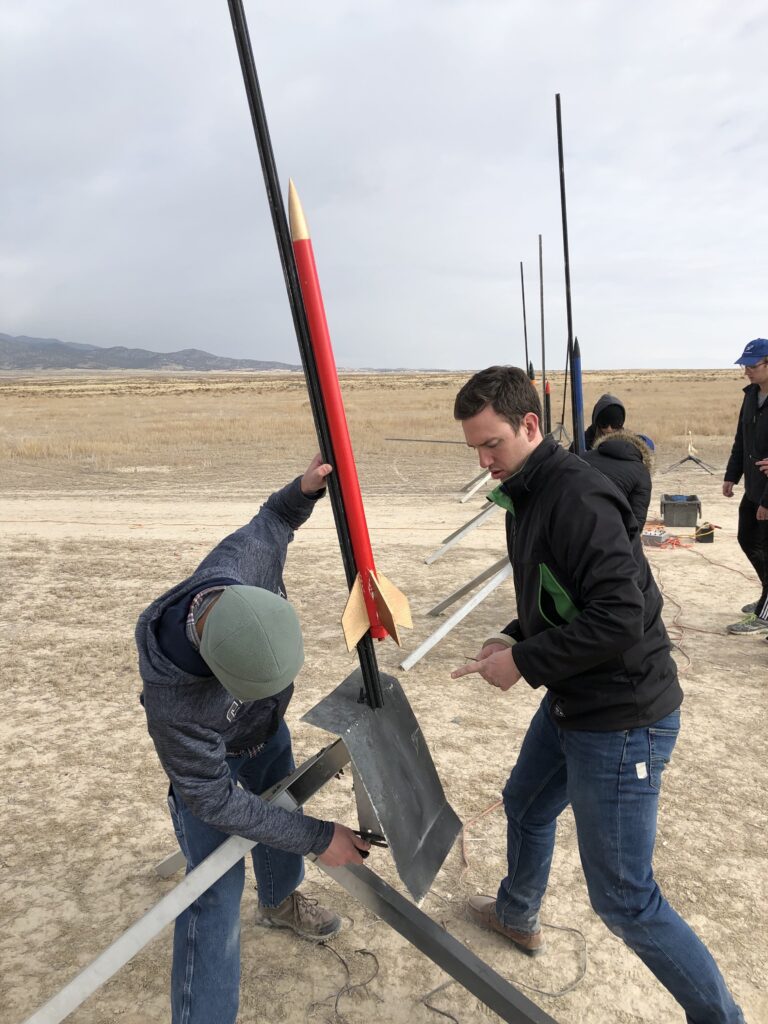Every Fall, BYU Rocketry hosts the Student Launch Competition, in collaboration with the Utah Rocketry Club. The competition is an opportunity to teach students the basics of rocketry including design, simulation, construction, flight stability, and recovery. This rocket, built with my friend Alexa in November of 2018, was my very rocketry experience.
Design and Construction
The rocket’s structural integrity was a key focus, particularly in the fin design. We incorporated fin tabs that extend through the wall of the outer tube and aligned with the inner motor mount tube. These tabs were strategically sandwiched between centering rings (which connect the motor mount to the rocket body), creating a robust connection between the inner motor mount tube and the outer tube. This design approach not only ensured structural strength but also provided stability critical for successful high-power rocket flights.
All students are provided with a G78W-4 motor to power their rocket. This specific motor is chosen as it is one of the most powerful motors available before requiring high-power certification from a national rocketry group (e.g., the National Association of Rocketry or the Tripoli Rocketry Association). The G78W-4 motor features a four-second ejection delay system. After the main motor burn is complete, a slow-burning delay charge activates the ejection charge. This ejection charge rapidly pressurizes the body tube, forcing the nose cone to separate from the rocket. A shock cord, anchored to the motor mount’s centering ring and connected to the nose cone, keeps all components tethered together while providing enough slack for full parachute deployment. When the nose cone separates, it pulls the parachute out of the body tube, allowing the rocket to descend safely under canopy.
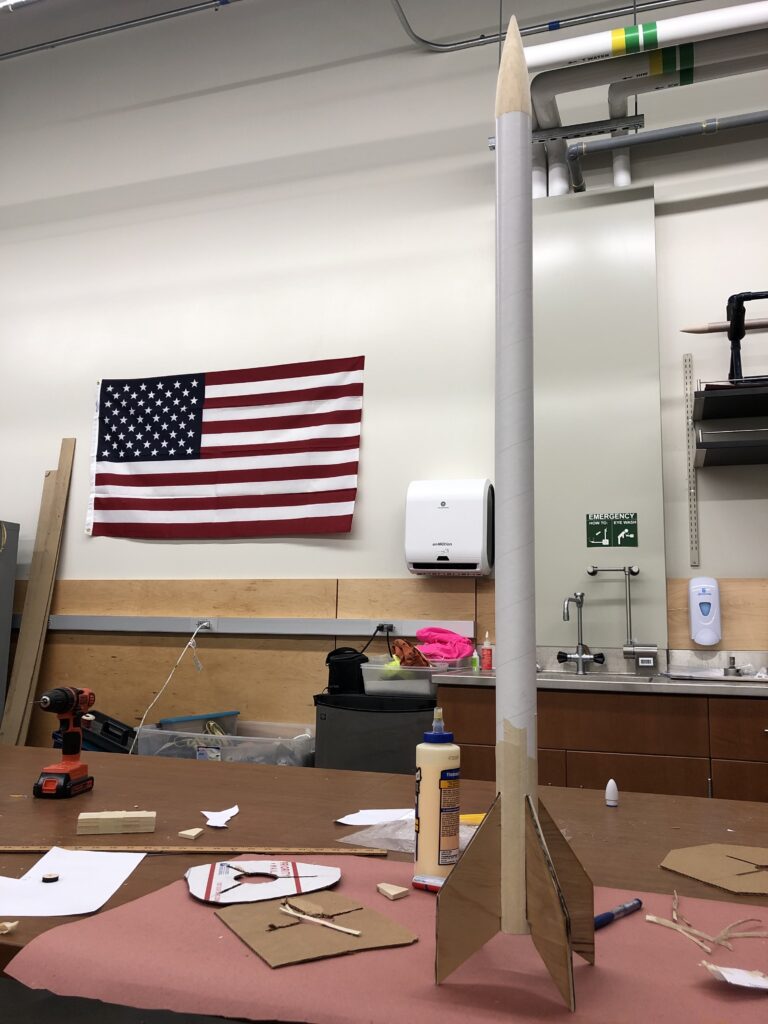
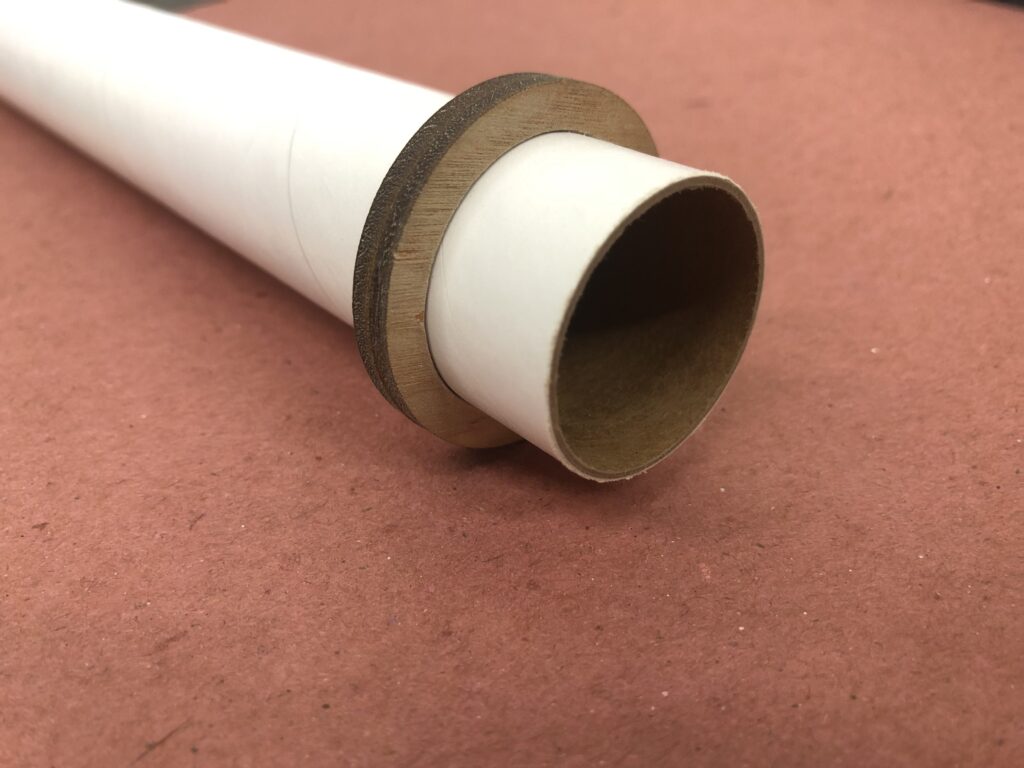
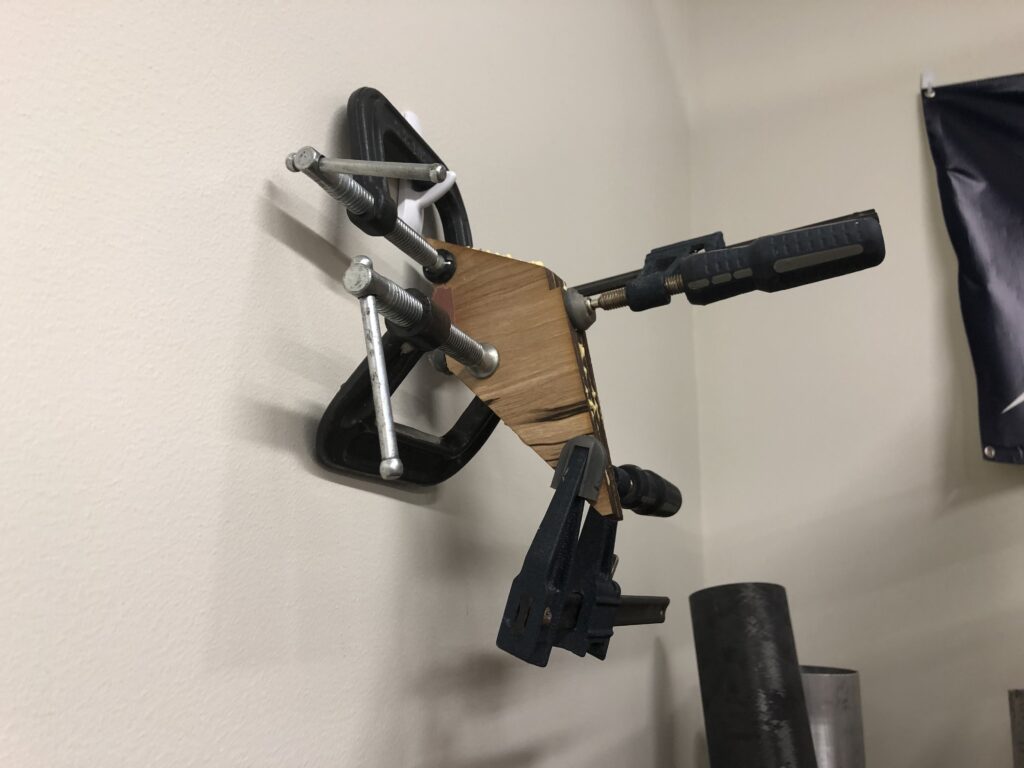
Launch Day
The rocket’s maiden flight took place in the West Desert of Rush Valley, Utah, at a UROC launch event. Despite not being able to record the exact altitude due to malfunctioning club altimeters, the flight proved to be a complete success. The rocket maintained a stable trajectory throughout its ascent, and the recovery system performed as designed. The ejection charge deployed the parachute exactly as planned, bringing the rocket back to earth safely and completing my first venture into high-power rocketry.
